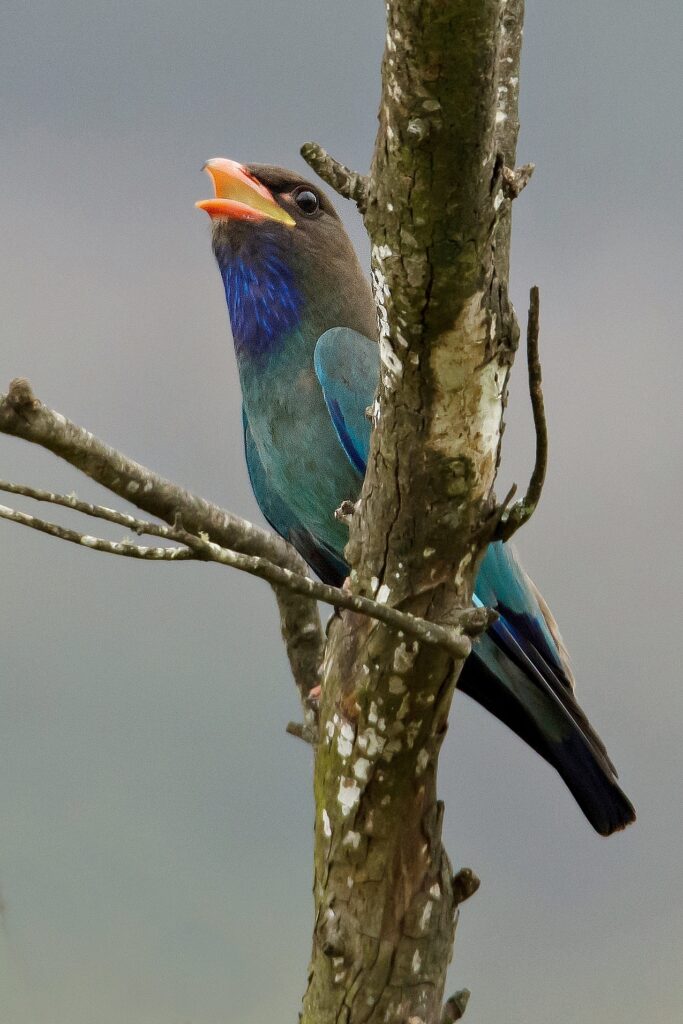The only Australian member of the Roller family, the Dollarbird gets it’s unusual name due to the prominent whitish-blue spot resembling a silver dollar on each wing, visible when the bird is in flight. The migratory Dollarbird arrives in Australia from PNG and surrounding areas in later spring and summer to breed and returning north over autumn and winter.
They maintain a very regular ‘flight schedule’ – in my 32 years living in Barrengarry the earliest they have arrived has been November 1st, with the latest arrival recorded November 9th, and they leave almost exactly three months after they arrive. Their stay may be longer in more northern parts, and they are thought to return to the same location each migration.
The white eggs are laid in an unlined tree hollow and are incubated by both adults. The young birds are also cared for by both parents. The same nesting site may be used for several years.
Both sexes appear very similar with the female being just slightly duller in colour, and the juveniles lacking the intense blue throat and having brownish beaks and legs rather than the red of the adults as can be seen in one of the photos.
Rarely seen on the ground, they prefer higher perches from which they launch their aerial courtship displays, and to hawk insects in mid-flight during early evenings in what is a very impressive aerobatic display. Consequently they are a very difficult species to photograph. So keep a keen eye out for them in the early evenings over summer.
Colin Talbot
Photographer
